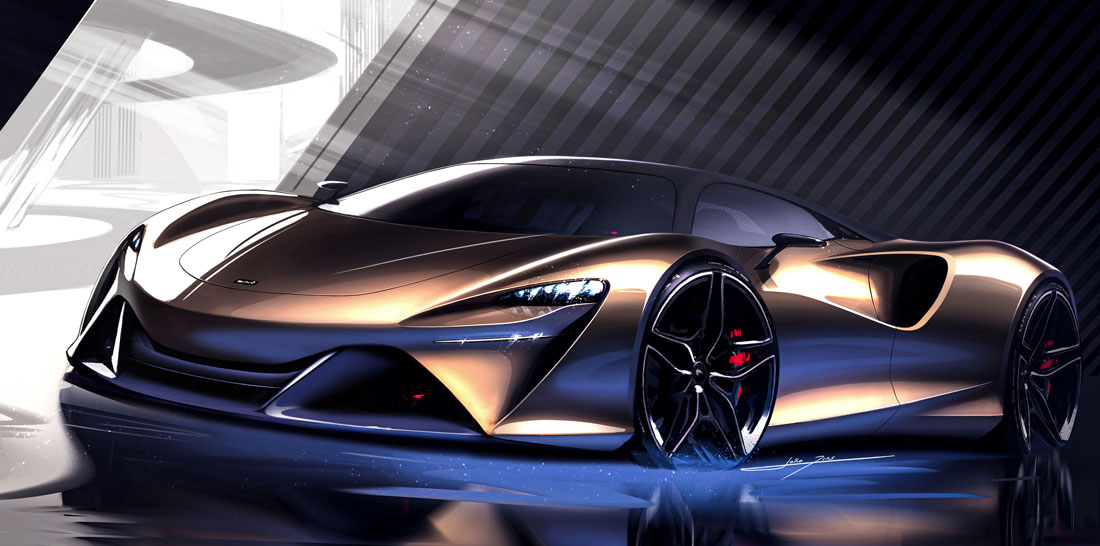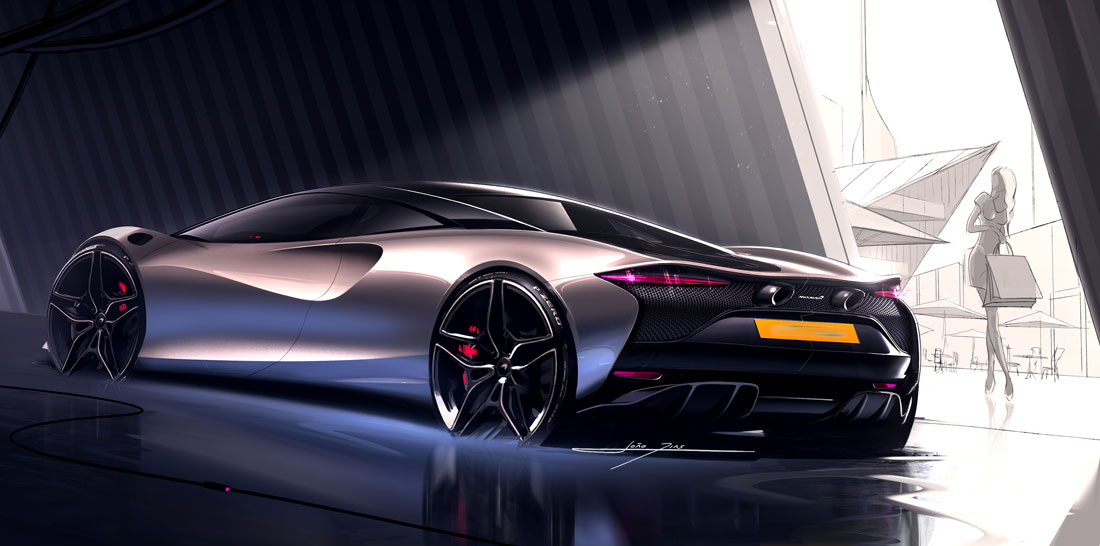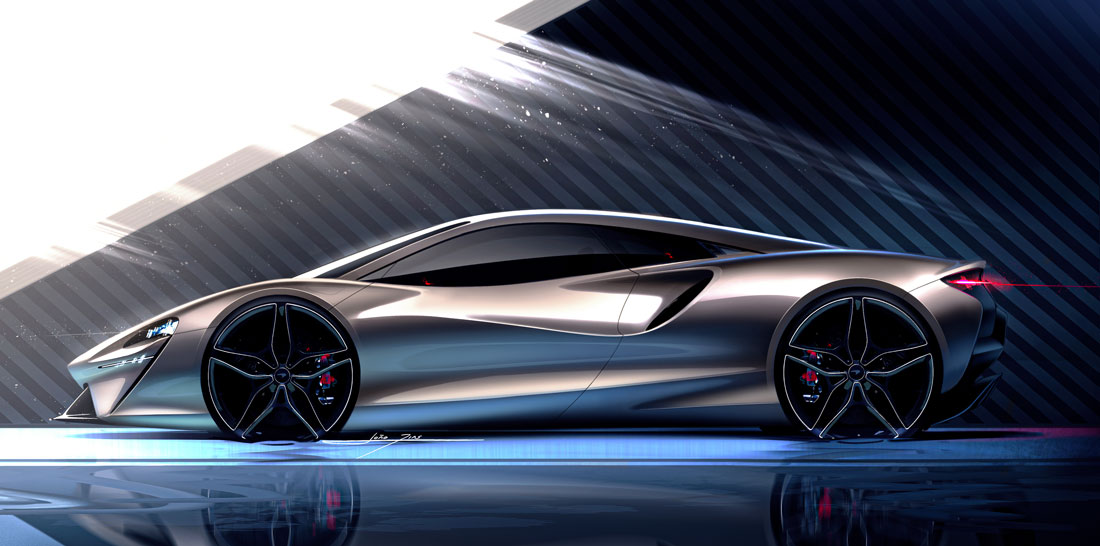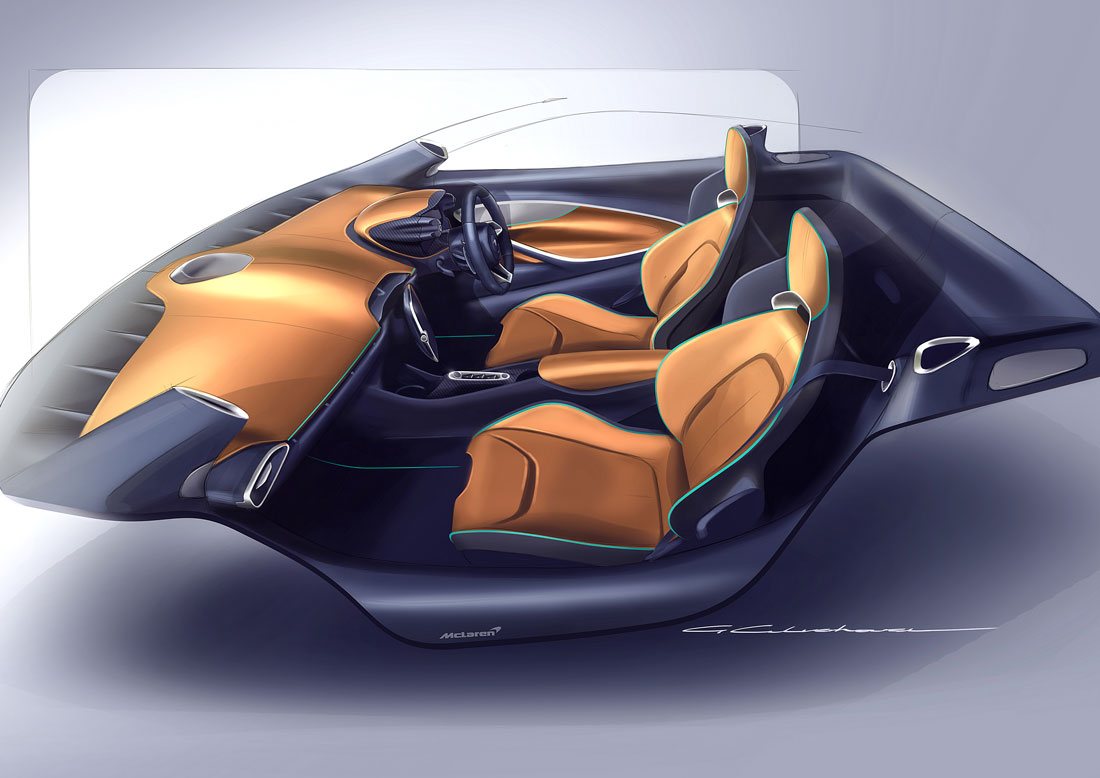The McLaren Artura gives the lie to all those who still believe that emotion and sportiness do not go well with electrification. The first supercar in the segment with plug-in hybrid powertrain, the Artura is the epitome of all McLaren's styling principles, as design chief Robert Melville tells us from the British manufacturer's headquarters in Woking: "Formal purity, technology and function. The Artura is a travelling sculpture shaped by the wind".
A young design centre
To create the model, the design team started from a blank sheet of paper with a brand new carbon monocoque (the MCLA) capable of accommodating a 3.0 V6 engine, an electric motor and a 7.4 kWh battery pack, enabling it to do about 30 kilometres with zero emissions without giving voice to the powertrain's 680 horsepower. For this new supercar, the pencils of the young McLaren designers - the average age of the style centre is around 30 - took the path of evolving the British manufacturer's styling canons without upending them.
Alluminium roof and pillars
Although the Artura is clearly recognisable as a McLaren, several styling solutions are completely new: from the prominent, downward-pointing nose to the roof made from a single aluminium component that includes the front pillars. The principle of formal purity is echoed at the rear, defined by long, ultra-slim Led lights, two raised exhaust pipes and carbon deflectors to aid the aerodynamics.
The driver at the centre
The interior has been built around the driver: "McLaren's mantra has always been to put the driver at the centre and then add all the other elements without compromising visibility and ergonomics. The Artura's cabin follows this approach”.
Maximum argonomics
The infotainment display is raised and oriented towards the driver's seat, while buttons for traction control and driving mode selection have been installed on the digital instrument panel. "Everything is at your fingertips. In the best McLaren tradition, the Artura also has no controls on the steering wheel, to avoid distractions", continues Melville.
Between physical and digital
The design team began work on the project in 2017, the use of augmented reality for digital development giving a strong technological imprint. However, no one has forgotten the craftsman-like approach necessary for a supercar with high emotional content. Electrification, good design and passion: McLaren seems ready for the start of a new era.
(Full article in A&D no. 248)
















